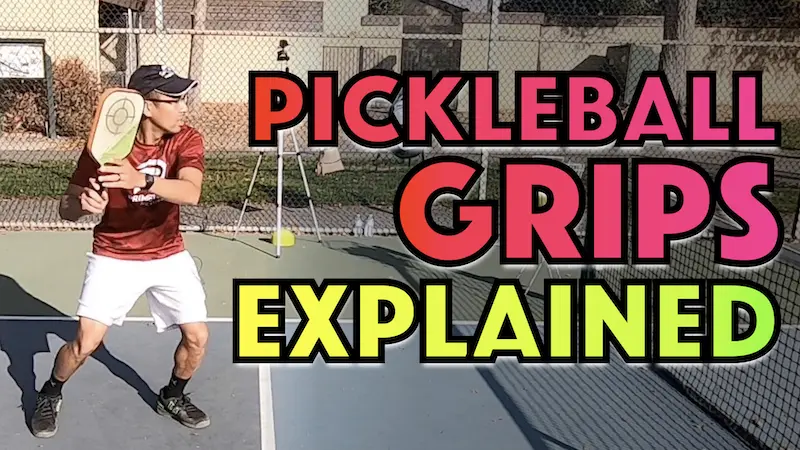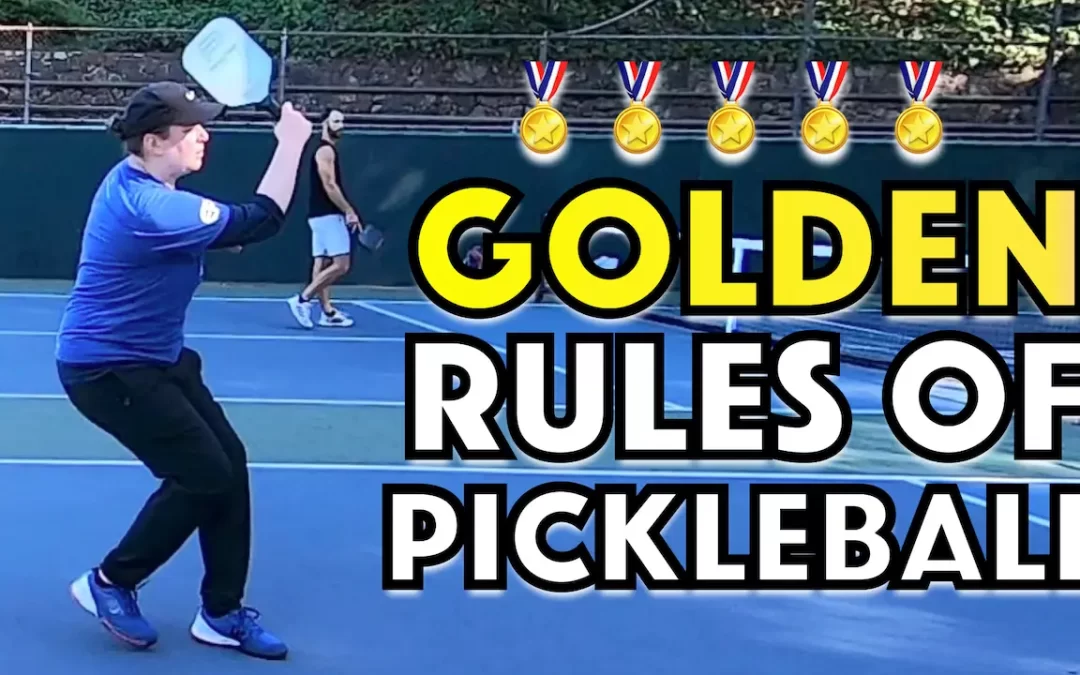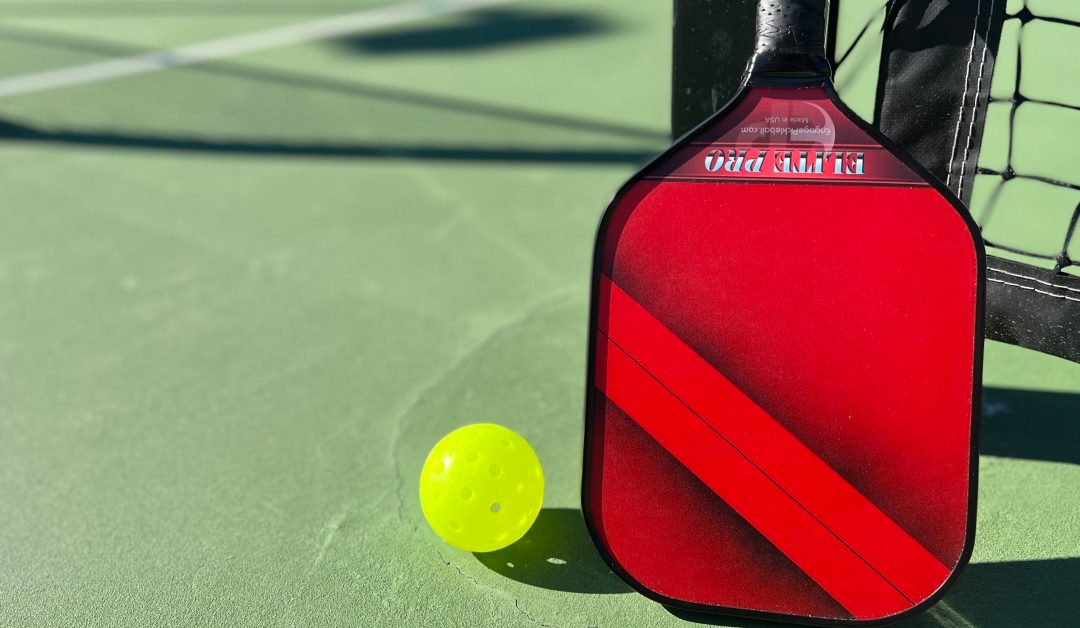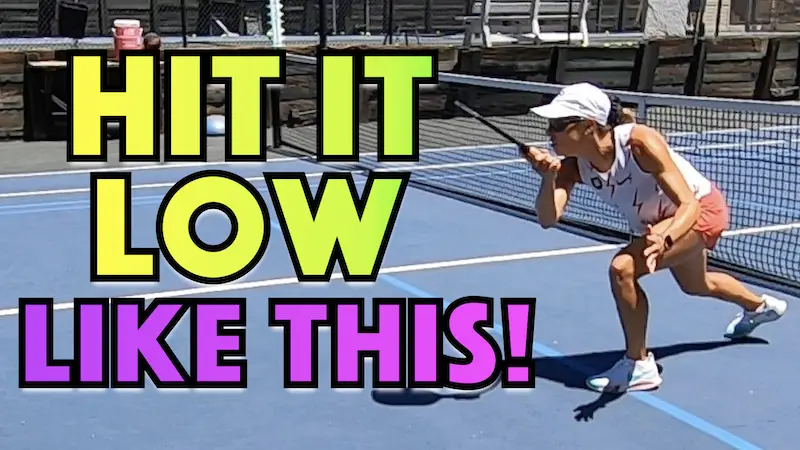Over the years I’ve been playing and coaching pickleball I’ve heard some strategic advice that comes up time and time again.
These strategies get repeated like mantra. Many have considered this general strategic outline as the be-all and end-all for sound pickleball.
Therein lies the problem because at the outset none of this advice is wrong per se.
In fact, in the early days of one’s pickleball playing lifespan, I generally agree that the structured advice is good to follow under the controlled parameters to which it applies. You should strive to master it quickly because it’s foundational to long-term success.
The thing is that at some point this advice will hold you back because you’ve outgrown it and because, like I said, it only applies under the right conditions.
Although those conditions are common, when those conditions aren’t present and you follow these rules that don’t apply, well things go downhill fast.
This set of strategies are limited and too one-dimensional.
In fact, you should seek to outgrow them as quickly as possible because you need to in order to build on them and expand your skill set accordingly and go deeper, beyond the surface, into multi-dimensional strategies, if you hope to become a very good player that poses a real threat anytime you step on the court.
You need to learn and execute more advanced complex and nuanced strategies.
We’re going to break down what those cores set of strategies are, why they work to start, and how and why you need to go beyond them over time.
Tip #1 – Just Get Your Serve In
When you’re just starting out with pickleball this advice does have merit because it promotes consistency and a reliable serve to at least get the point started.
One of the main objectives of pickleball when you’re just starting to play is to get the ball over the net and in, no doubt about that.
But, at some point on your development journey you’ll start to realize that you are getting punished if your serves are short, and worse if they’re short and they bounce high, which is generally what’s happening when you apply a just get it in strategy.
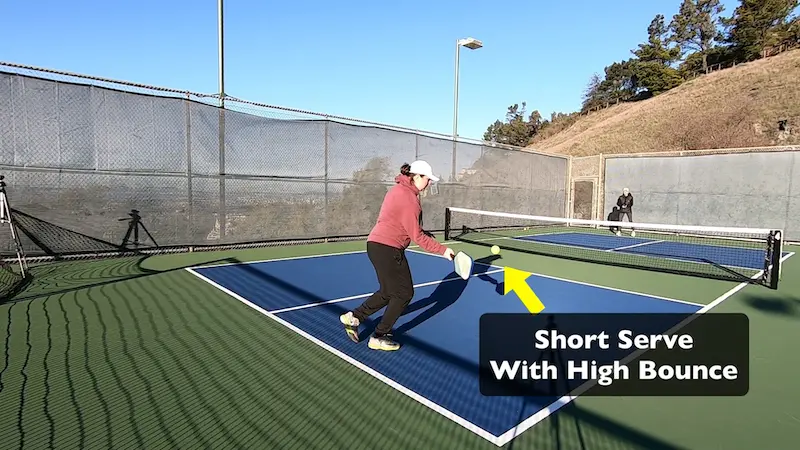
You’ll notice you often get punished by those with an aggressive return that can put you at a disadvantage in the point very quickly.
You’ll get pushed back in the court by a well-struck and deep return and that is going to be hard to recover from because both opponents are now up at the non-volley zone line.
They have great court positioning at that point and can dictate the point from up there while you and your partner are back in the court getting pushed around.
Not good.
As soon as you have control over your serve and can and get it in reliably, you’ll immediately want to shift your focus on the serve to hitting it deep with as much speed as you can reasonably control.
This will make it as difficult as you can for the returner to hit a strong return. This will then give you the best chance of receiving a shot that isn’t going to be as rough while making their trip to the net, after their return, tougher.
You’ll immediately be in better shape for the rest of the point if you make them work to hit a good return.
Tip #2 – Get Your Return In & Rush Up To The Net
Once again, at least at first, the part about getting the return in is good advice because we do want to promote being consistent and above all else, first, make the shot.
Then, once you get your control down and can rely on making your return do more with it so that you can get an edge in the point. Get it deep so that you can comfortably move up to the non-volley zone line behind it.
As far as the second part of rushing in after you return no matter what, it depends. Ideally yes, but come in behind a good return not just any old “just get it in” type of return.
If you hit your return poorly and the shot landed short and worse, it’s going to bounce high, don’t charge the net behind it. You’re going to get punished on that next shot.
You must earn your right to follow it in and you’ll do that by hitting a good deep return. It’s best if you earn that trip every time and it should be achievable most of the time.
Try and get your return as deep as you can reliably hit it so that your opponent is as far back in the court as you can push them.
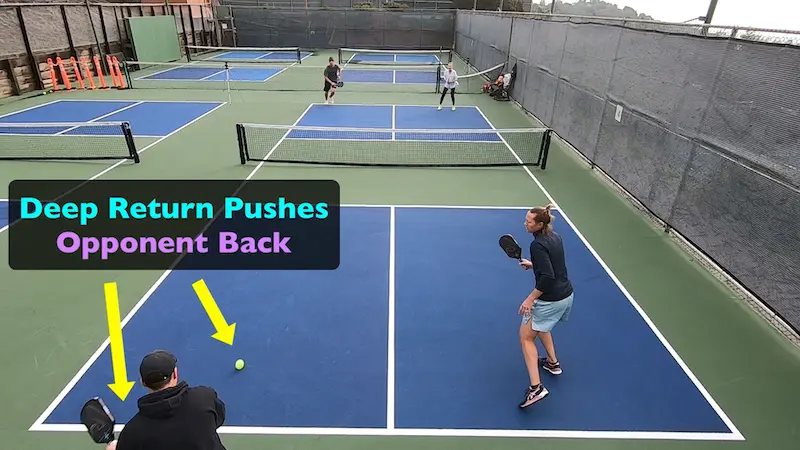
A deep return has the two-part advantage of making your opponent hit a shot from deep in the court and being in flight longer thus allowing you extra time to close the gap between you and the non-volley zone line.
And you, as the returning team, should do your best each time you return, to be both up at the net after the return to capitalize on your opportunity of being the first team in the point that can do that.
Get those returns deep as soon as you develop some control.
Tip #3 – Dinking Is The Best Way To Play
Here are a few phrases thrown around that all kind of mean the same thing. They are: “pickleball is all about dinking”; “the party is at the net”; “dinking is real pickleball”; or something of the like, claiming that dinking is the best way to play.
Many go as far as to say that players that routinely hit hard are ruining the game. I respectfully disagree.
Being able to hit with pace as well as handle hard struck balls hit at you is an incredibly important part of the game and is getting more and more important all the time.
Things were always going to head in that direction as the sport evolved even though for many years before pickleball exploded, it wasn’t so.
Think of any sport in the world. Those who can play it at the fastest speeds, all while maintaining control and accuracy at those speeds, always win. It’s true for practically every sport you can think of.
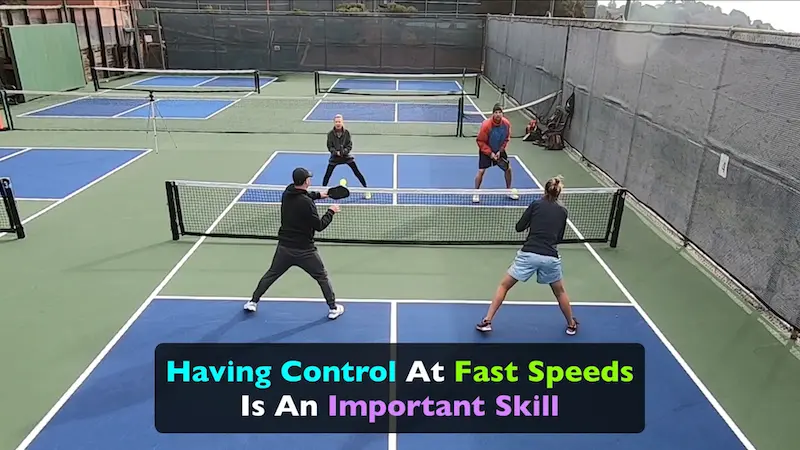
Is touch and slowing things down also part of the repertoire of the best players in any sport? Yes, it absolutely is for the times when that is the best strategy to execute while they build up towards the next fast-paced attack.
That’s just how sports typically go.
Both fast and slow are needed if you want to be the best player you can be.
If you want to play mostly soft, then by all means, find or form a group that wants to do that. But please get on board with the fact that speed is here and it’s here to stay.
Not only that, but things are also probably only going to get faster and harder.
Slow shots will always have their place, but they are not the main show.
If you want to play at high levels, you need to get on board with dishing out and dealing with speed. There’s no way around it.
This next tip is one that makes sense in a lot of cases but should never be followed blindly because it can be off the mark at times.
Tip #4 – Forehand Always Takes The Middle
Many people throw around the phrase “forehand takes the middle”.
Is the forehand usually someone’s stronger wing? Yes, that’s often true.
So, it stands to reason that when you have two typical players as partners that are about the same level, and each has a forehand better than their backhand, the player with their forehand in the middle should crowd the middle and take more middle balls, typically.
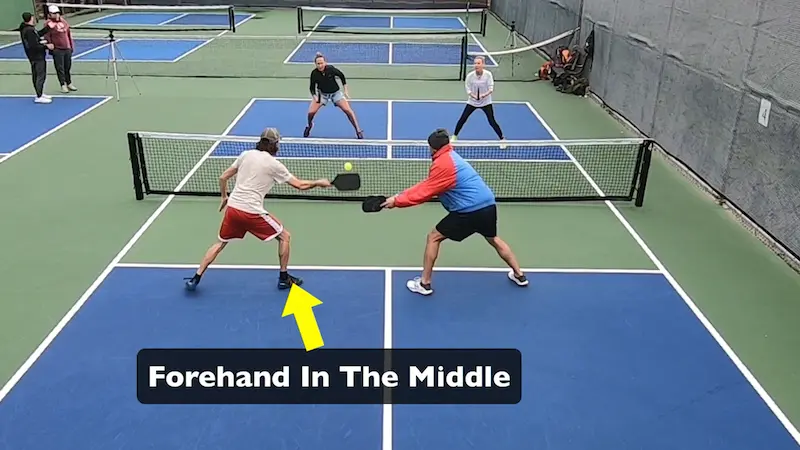
But it really depends, one player might have a backhand that is stronger than both wings of their partner.
Another player might have a weak forehand and a dominant backhand, better than most players forehands.
Things don’t always follow the status quo.
Here’s what Anna Leigh Waters, the best player in the women’s game today, has to say about the left side player always being the dominant player – “This left side equals better player notion needs to go away. The best player can play both sides and can adapt by switching sides when necessary.”
Anna Leigh is an incredible player and arguably one of her best, if not her best shot, is her two-handed backhand, both off the ground and out of the air.
Up until now she’s played predominantly with her mother, Leigh Waters, who is an incredible player in her own right.
Most would agree, probably including her mother, that Anna Leigh is the better player, yet she can often be found on the right side and Leigh on the left. They then have two huge weapons in the middle which is exactly what you want: Leigh’s forehand and Anna Leigh’s backhand.
Also, some people just prefer the right side because they understand how to receive and play the angles better from that side.
It’s really a case-by-case basis.
In mixed doubles it’s not always true that the woman should play the right side just as it isn’t necessarily true that the forehand takes the middle.
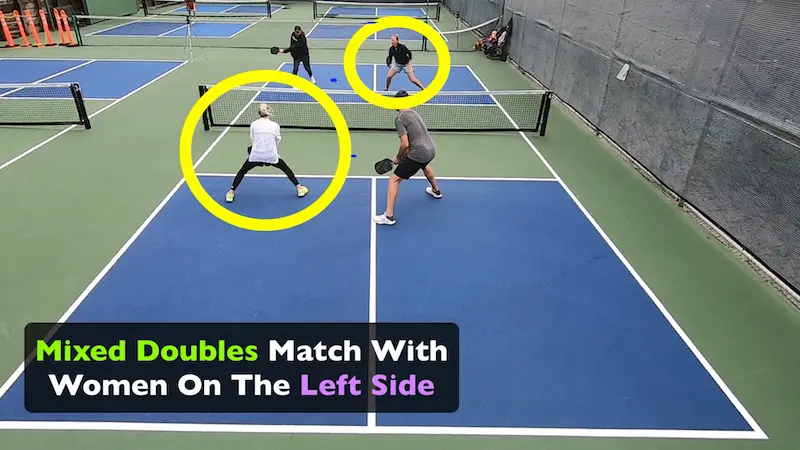
Will it often make sense? Yes. But you must put your thinking cap on and consider what’s best for you and your partner as well as factor in who you’re playing and decide accordingly.
Tip #5 – Drop & Rush Up To The Net
This is typically advice given to the serving team about what to do with the third shot so they can neutralize a net rushing returning team and they themselves also advance to the net.
Is it strategically sound advice to use a drop to get up to the net if your team is not up at the non-volley zone line and their team is? Yes, it is but it totally depends on the situation.
You must hit a good drop that won’t bounce too high. Players are attacking those higher bouncing drops because skills have improved and so has paddle technology.
They can hit more spin on their attack allowing them to attack from lower contact points.
The standards for a good drop have been raised dramatically.
That’s challenge number one working against this tip.
Challenge number two is that returns are getting better as players ditch this “just get the return in” policy we discussed earlier, and a good drop is a highly skilled shot under the best of conditions.
When you’re pressed and off balance from a good return deep in the court, your chances of hitting a solid drop have declined substantially and rushing in after a low-quality drop is almost equal to conceding the point outright.
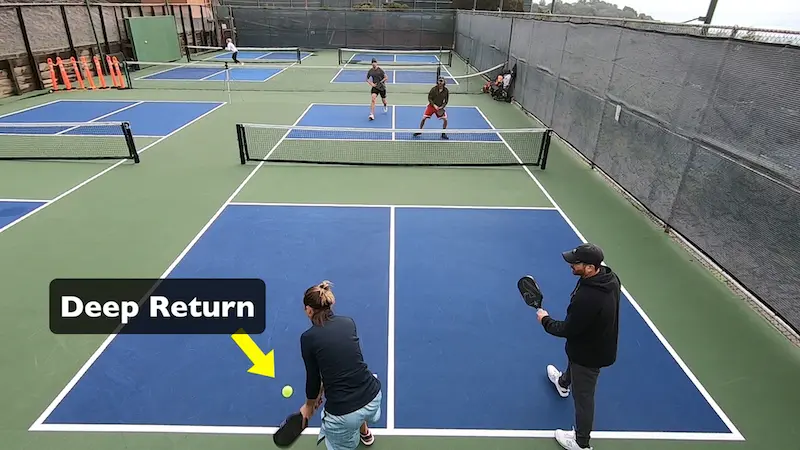
Many times, you’re far better off to hit a strong and low drive until you earn a ball that you can more easily drop. That’s where this strategy is headed in modern pickleball.
You should only come up after the drop if you’re confident the best they can do with it is hit a weak attack or a medium paced ball at your feet.
I believe that we will see a lot more driving of the third shot to earn a droppable shot on the fifth, or a shot beyond that.
It may even become the norm.
Tip #6 – “Middle Solves The Riddle”
Tip number six is the catchphrase “middle solves the riddle”.
Personally, I have always disliked this one from the moment I heard it.
Coming from a high-level background in another sport, I knew right away that one shot alone doesn’t solve anything. It’s always about combinations, about finding patterns that will work against the opponents you’re currently playing and with the partner that you’re currently playing with.
At lower levels, players tend to go for the gaps early and frequently. Clearly the middle seems like the biggest gap and yes, against two opponents who don’t cover the court well, shots that you ram through the middle will work to a certain extent.
But as you progress, you’ll have to work to create a bigger opening in the middle by working to separate your opponents somewhat with your previous shots or work to pinch them together and create a gap on one side or the other that you can then hit through.
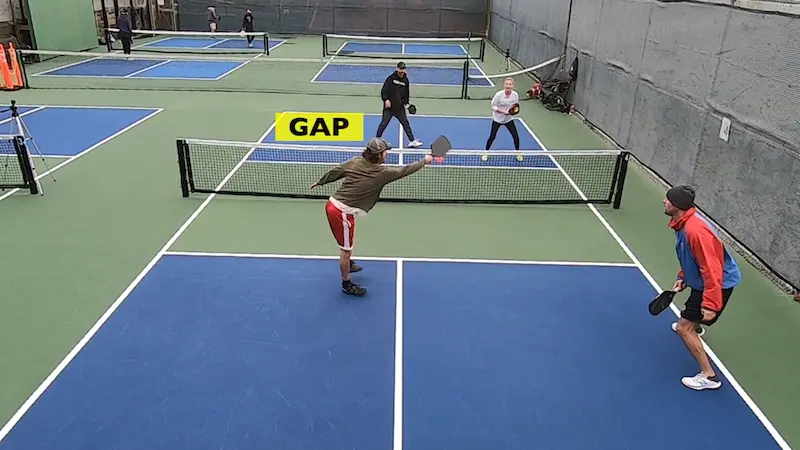
Work combinations of different speeds spins and targets on your shots to create chaos and gaps on the other side.
That’s how you solve the puzzle and ultimately win points and the game.
Tip #7 – Never Back Off The NVZ Line
Never backing off the non-volley zone line is one of those tips that you may want to adhere to at the start because many players drift back off the line unknowingly and unintentionally when they shouldn’t because they tend to swing too much at their dinks and overall lack a strong dinking game.
They don’t yet fully appreciate the value of holding the line as much as you can.
It is the most offensive place on the pickleball court and the team that controls the non-volley zone line best usually wins.
That being said, there are at least two instances where you want to back up.
Instance #1
When there is an incoming drop and you can see that maybe it’s a bit too high and if you let it bounce then it will sit up giving you a really nice opportunity to step back a bit and hit a rolling attack off the bounce or at least a rolling mid-pace shot that you can get down at their feet. Either of which will be more offensive than if you stayed up at the line and hit a dink volley from a lower contact with the net right in your face.
Instance #2
If you popped a shot too high when you’re up at the non- volley zone line and now you need some time and space to deal with the incoming attack.
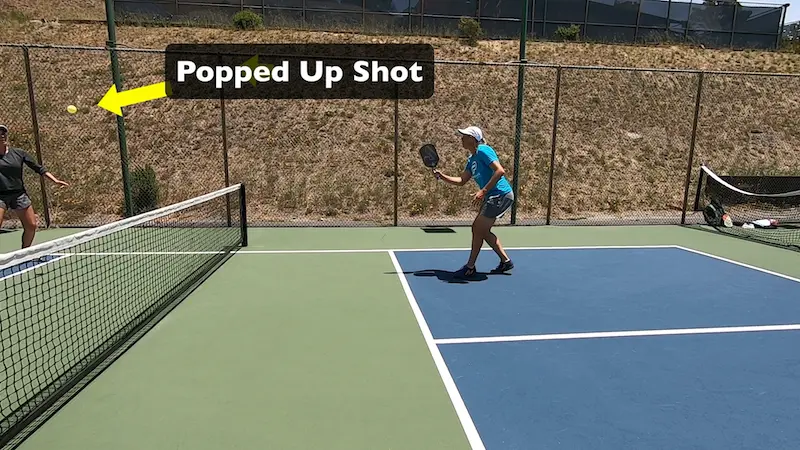
Recognizing that you’re about to be attacked and backing off the line quickly is a really good idea under the right circumstances. Otherwise hold that line as best you can.
Tip #8 – Never Be In No Man’s Land
First, it’s no longer refer referred to as “no man’s land“, it’s the transition zone.
It’s perfectly acceptable to be there but you don’t want to be there for long because there is no offensive advantage to it.
It’s usually the zone from which you must work your way to neutral.
We touched on this in the last point particularly when it comes to backing up to give yourself more time and space to defend.
The best players routinely back up to mid-court as needed and at times retreat all the way to the baseline if they’ve hit a weak shot.
They sometimes go all the way back there and must throw up a defensive lob after a defensive lob until they create an opening and somewhat of a weaker shot from the opponent and get a break from the offensive onslaught and can then find a path back to neutral with all four players up at the non-volley zone line.
This also applies to working your way in after a drop. There’s no need to hit a drop and sprint to the line, as you may have heard.
You’ll often get punished on that next shot if you don’t get your feet all the way set and get balance before they’re striking the next shot.
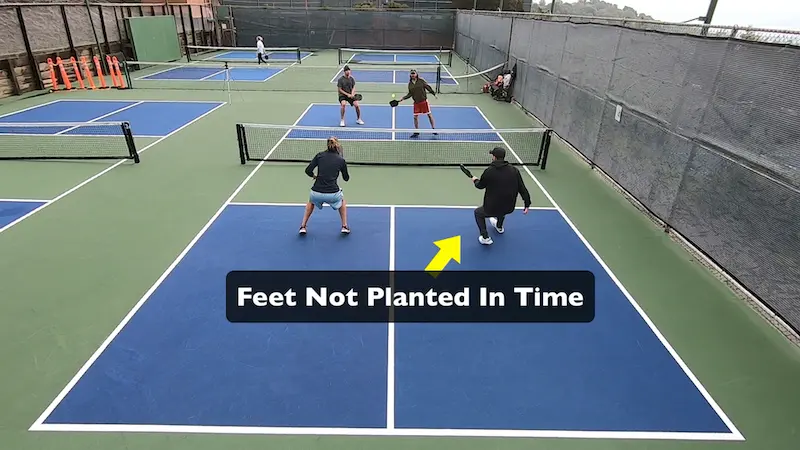
You can and should take your time.
Hit one or two drops from the transition zone or more if you must.
Stay calm and work your way in. This has become the more stable and preferred way to advance to the line as players have gotten better at skills that are designed to keep you back in the court.
Being comfortable in the transition zone is a skill you need to develop if you hope to become an advanced player.
Tip #9 – Always Reset When Attacked
Last but certainly not least is the tip of always resetting when attacked.
This one still gives me nightmares because I was told this very early on in my pickleball career by a high-level player. Since I had no idea what I was doing I listened and did it.
Every time I got attacked I reset and then I’d keep getting attacked and attacked and attacked.
The nuance that they failed to inform me of was that if they attack me and I have an above net level contact I should counter-attack and make them pay because what they did was a bad speed up.
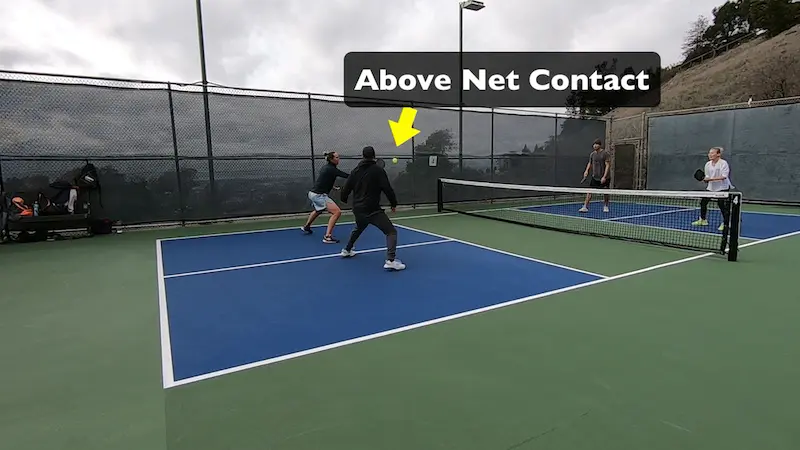
They attacked from a low ball giving me a high contact so if my hands were fast enough, which they were, I could counter-attack right back.
Well, that changed everything!
Once I gave myself the green light to counter-attack I was a whole different player and made them pay for their bad speed up every time.
All of this goes to show that you really must think things through at a higher level and do what’s best for the situation at hand. There’s not just one best way to always do things. There’s much more nuance to pickleball than that.
It’s important that we don’t blindly fall back on conventional wisdom. Learn to put your thinking cap on and assess what is best for you and your team when you step out there to play a competitive match.
Build a combination of shots to execute a play and find patterns of these combinations that work.
This is not an exhaustive list but it’s most of the big ones that I hear come up time and time again.
What do you think about the tips we’ve covered here today?
Can you think of anymore?
And where do you think the game is headed as far as each strategy goes in the coming years?
Let me know in the comments of the video at the top of the post. I’d love to hear about it!


